
Duke of Tetuán is a hereditary title in the Peerage of Spain, with the dignity of Grandee and granted in 1860 by Queen Isabella II to General Leopoldo O'Donnell, 1st Count of Lucena, who had served as the Prime Minister of Spain for several legislatures between 1856 and 1866.

Duke of Cardona is a hereditary title in the Peerage of Spain, accompanied by the dignity of Grandee. The title was granted in 1491 by Ferdinand II to Juan Ramón Folch de Cardona, 5th Count of Cardona, as an elevation to dukedom.
It was originally granted as "Viscount of Cardona" (1040-1375) and later elevated to "Count of Cardona" (1375-1491), as a noble title in the 15th century to members of the Catalan family known as "Folch de Cardona".
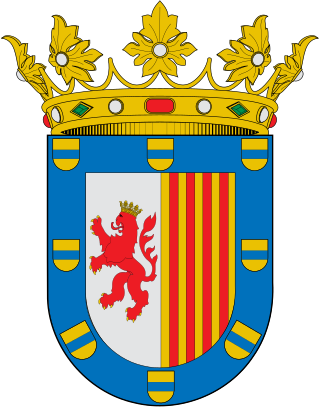
Duke of Arcos is an hereditary title in the Peerage of Spain, granted by Isabella I in 1493 to Rodrigo Ponce de León, then 4th Count of Arcos. The dukedom is among the first 25 titles which reached the rank of Grandee of Spain 1st Class, in 1520. Nowadays however, all Grandees are of the same class.

Duke of Huéscar is a hereditary title in the Peerage of Spain, accompanied by the dignity of Grandee and granted in 1563 by Philip II to María Josefa Pimentel, daughter of the Dukes of Benavente, as a gift for her wedding to Fadrique Álvarez de Toledo, future Duke of Alba.

Duke of Escalona is a hereditary title in the peerage of Spain, accompanied by the dignity of Grandee and granted in 1472 by Henry IV to Juan Pacheco, 1st Marquess of Villena.

Duke of Béjar is a hereditary title in the Peerage of Spain, accompanied by the dignity of Grandee and granted in 1485 by the Catholic Monarchs to Álvaro de Zúñiga, 1st Duke of Plasencia and chief justice of Castile.

Duke of Benavente is a hereditary title in the Peerage of Spain, accompanied by the dignity of Grandee and granted in 1473 by Henry IV to Rodrigo Alonso Pimentel, 4th Count of Benavente.

Duke of Fernán Núñez is a hereditary title of nobility in the Peerage of Spain accompanied by the dignity of Grandee. The Countship of Fernán Núñez granted in 1639 to Alonso Gutiérrez de los Ríos was elevated to a dukedom in 1817 in the person of Carlos Gutiérrez de los Ríos, who became the 1st Duke of Fernán Núñez. The accompanying Grandeeship was granted in 1728, prior to being elevated to a Dukedom.

Duke of Bailén is a hereditary title in the peerage of Spain accompanied by the dignity of Grandee and granted in 1833 by Ferdinand VII to Francisco Javier Castaños for his military achievements during the Peninsular War as Captain general of the Royal Spanish Armies, becoming the first man to destroy a Napoleonic army in an open field battle.

Duke of Tarifa, is an hereditary title in the peerage of Spain, accompanied by the dignity of Grandee. It was granted to Ángela Maria Apolonia Pérez de Barradas y Bernuy on 28 June 1886 by king Alfonso XII. The tile was originally granted as "Duke of Denia and Tarifa" but was separated into two different titles on 22 December 1886 by the Queen Regent, Maria Christina of Austria.

Duke of Palata is a hereditary title in the peerage of Spain, accompanied by the dignity of Grandee and granted in 1646 by Philip IV to Francisco Toralto de Aragón, a paternal descendant of Alfonso V of Aragon. The title makes reference to the town of Palata in Campobasso, Italy, where Toraldo's father held a fiefdom.
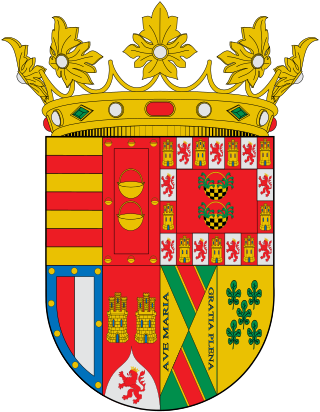
Duke of Santángelo is a hereditary title in the Peerage of Spain, accompanied by the dignity of Grandee and granted in 1497 by the Catholic Monarchs to "El Gran Capitán", a general who negotiated the Surrender of Granada and led the Spanish to victory in the Italian Wars. It is a victory title, making reference to the town of Città Sant'Angelo in the Province of Pescara, Italy.

Duke of San Miguel is a hereditary title in the peerage of Spain, accompanied by the dignity of Grandee and granted in 1625 by Philip IV to Juan Gravina y Cruyllas, viceroy of Sicily.

Duke of Victoria de las Amezcoas is a hereditary title in the Peerage of Spain, accompanied by the dignity of Grandee and granted posthumously in 1836 by carlist pretender to the throne Infante Carlos as Charles V to Tomás de Zumalacárregui, captain general of the Carlist army, along with the Countship of Zumalacárregui.

Duke of Santisteban del Puerto is a hereditary title in the Peerage of Spain accompanied by the dignity of Grandee, granted in 1738 by Philip V to Manuel de Benavides, 10th Count of Santisteban del Puerto and Brigadier of the Spanish Army.
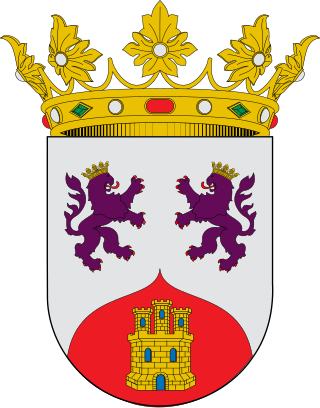
Duke of Arjona is a hereditary title in the Peerage of Spain, accompanied by the dignity of Grandee and granted in 1423 by John II to Fadrique Enríquez de Castilla, Count of Trastámara and a great-grandchild of Alfonso XI.

Duke of Maqueda is a hereditary title in the Peerage of Spain, accompanied by the dignity of Grandee and granted in 1529 by Charles I to Diego de Cárdenas, 2nd Lord of Maqueda and adelantado of the Kingdom of Granada.
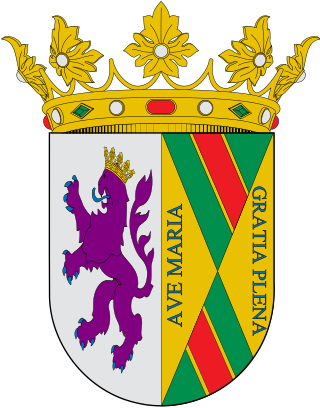
Duke of Estremera is a hereditary title in the Peerage of Spain, accompanied by the dignity of Grandee and granted in 1538 by Philip II to Ruy Gómez de Silva, 1st Prince of Éboli.
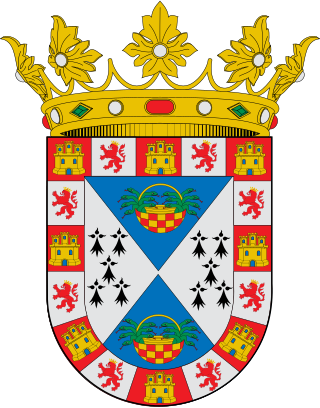
Duke of Sanlúcar la Mayor is a hereditary title in the Peerage of Spain, accompanied by the dignity of Grandee and granted in 1625 by Philip IV to Gaspar de Guzmán, 3rd Count of Olivares and royal favourite to the king.

Duke of Medina de las Torres is a hereditary title in the Peerage of Spain, accompanied by the dignity of Grandee and granted in 1625 by Philip IV to Gaspar de Guzmán, 3rd Count of Olivares and royal favourite to the king. A few days later, the king granted him the Dukedom of Sanlúcar la Mayor.





















